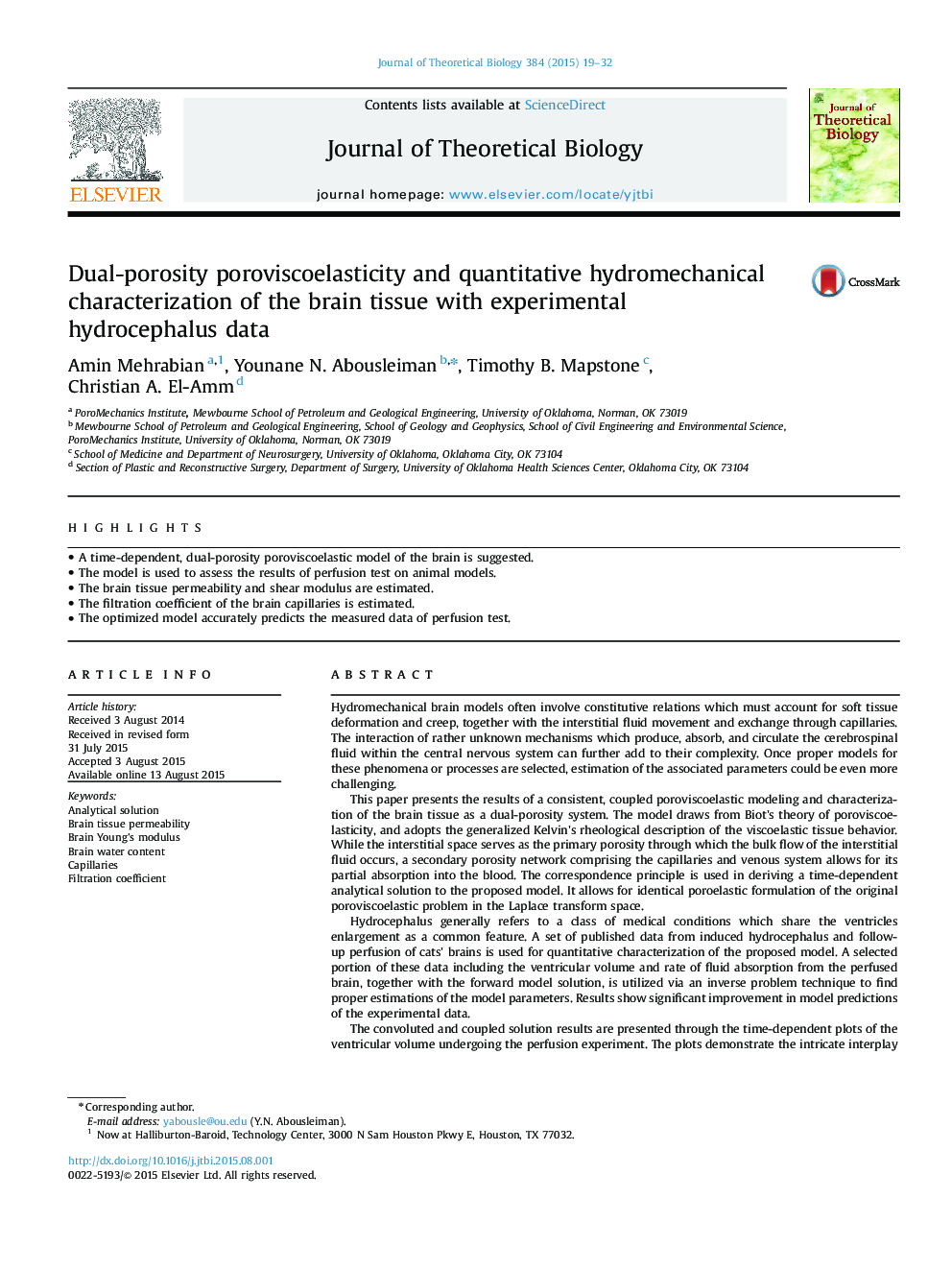| کد مقاله | کد نشریه | سال انتشار | مقاله انگلیسی | نسخه تمام متن |
|---|---|---|---|---|
| 4495976 | 1623826 | 2015 | 14 صفحه PDF | دانلود رایگان |
• A time-dependent, dual-porosity poroviscoelastic model of the brain is suggested.
• The model is used to assess the results of perfusion test on animal models.
• The brain tissue permeability and shear modulus are estimated.
• The filtration coefficient of the brain capillaries is estimated.
• The optimized model accurately predicts the measured data of perfusion test.
Hydromechanical brain models often involve constitutive relations which must account for soft tissue deformation and creep, together with the interstitial fluid movement and exchange through capillaries. The interaction of rather unknown mechanisms which produce, absorb, and circulate the cerebrospinal fluid within the central nervous system can further add to their complexity. Once proper models for these phenomena or processes are selected, estimation of the associated parameters could be even more challenging.This paper presents the results of a consistent, coupled poroviscoelastic modeling and characterization of the brain tissue as a dual-porosity system. The model draws from Biot׳s theory of poroviscoelasticity, and adopts the generalized Kelvin׳s rheological description of the viscoelastic tissue behavior. While the interstitial space serves as the primary porosity through which the bulk flow of the interstitial fluid occurs, a secondary porosity network comprising the capillaries and venous system allows for its partial absorption into the blood. The correspondence principle is used in deriving a time-dependent analytical solution to the proposed model. It allows for identical poroelastic formulation of the original poroviscoelastic problem in the Laplace transform space.Hydrocephalus generally refers to a class of medical conditions which share the ventricles enlargement as a common feature. A set of published data from induced hydrocephalus and follow-up perfusion of cats׳ brains is used for quantitative characterization of the proposed model. A selected portion of these data including the ventricular volume and rate of fluid absorption from the perfused brain, together with the forward model solution, is utilized via an inverse problem technique to find proper estimations of the model parameters. Results show significant improvement in model predictions of the experimental data.The convoluted and coupled solution results are presented through the time-dependent plots of the ventricular volume undergoing the perfusion experiment. The plots demonstrate the intricate interplay of viscous and poroelastic diffusive time scales, and their competition in reaching the steady state response of the system.
Journal: Journal of Theoretical Biology - Volume 384, 7 November 2015, Pages 19–32
